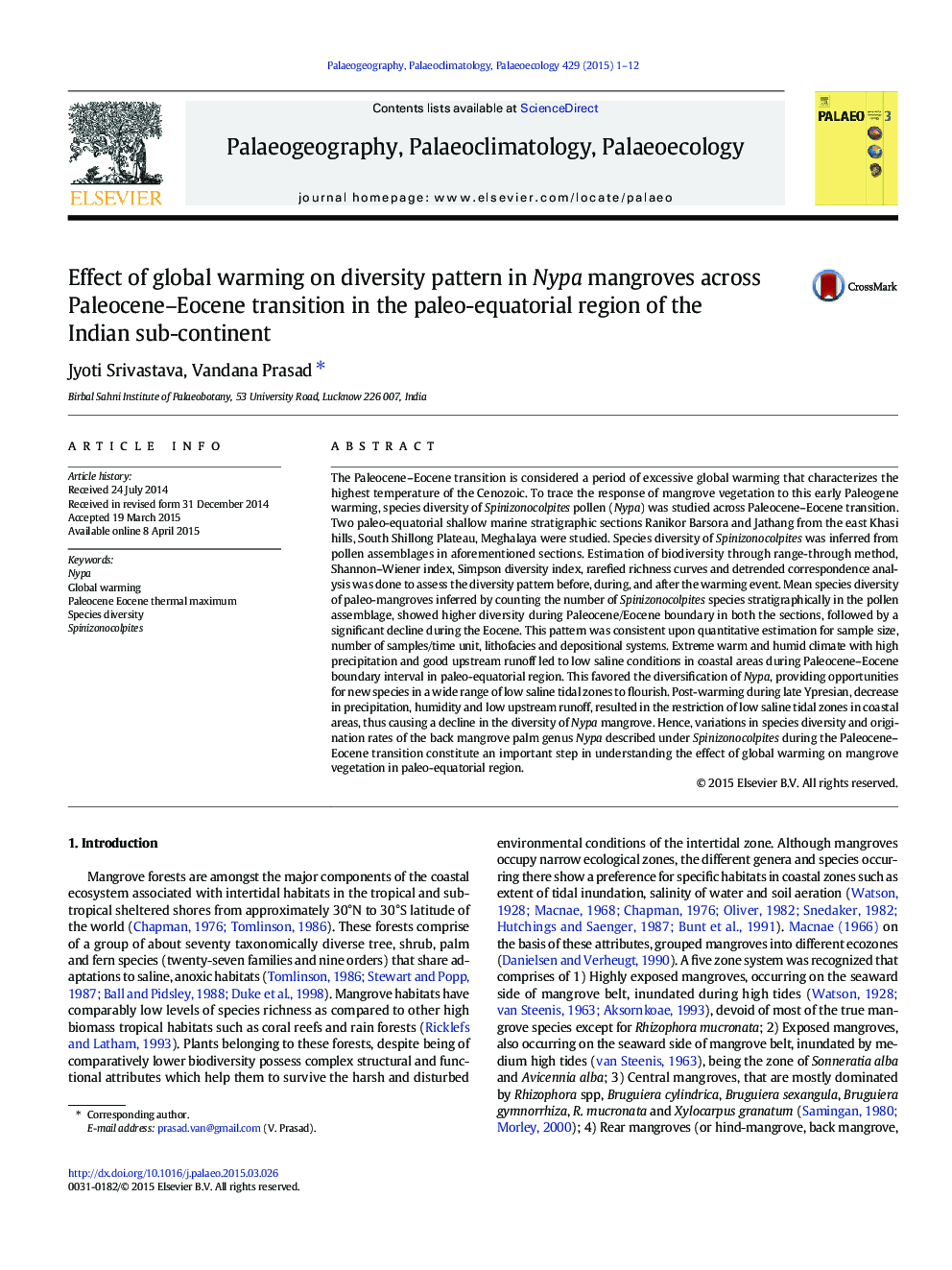| کد مقاله | کد نشریه | سال انتشار | مقاله انگلیسی | نسخه تمام متن |
|---|---|---|---|---|
| 4465962 | 1622161 | 2015 | 12 صفحه PDF | دانلود رایگان |
• Early Paleogene warming effect, studied from paleo-equatorial sections of Indian sub-continent
• Species diversity of back mangrove pollen Spinizoncolpites was studied across P/E transition.
• Mean species diversity was higher during late Thanetian–early Ypresian than during late Ypresian.
• High precipitation and good water runoff during P–E boundary favored diversification of Nypa.
• Low rainfall during late Ypresian caused decline in diversity of Nypa mangrove.
The Paleocene–Eocene transition is considered a period of excessive global warming that characterizes the highest temperature of the Cenozoic. To trace the response of mangrove vegetation to this early Paleogene warming, species diversity of Spinizonocolpites pollen (Nypa) was studied across Paleocene–Eocene transition. Two paleo-equatorial shallow marine stratigraphic sections Ranikor Barsora and Jathang from the east Khasi hills, South Shillong Plateau, Meghalaya were studied. Species diversity of Spinizonocolpites was inferred from pollen assemblages in aforementioned sections. Estimation of biodiversity through range-through method, Shannon–Wiener index, Simpson diversity index, rarefied richness curves and detrended correspondence analysis was done to assess the diversity pattern before, during, and after the warming event. Mean species diversity of paleo-mangroves inferred by counting the number of Spinizonocolpites species stratigraphically in the pollen assemblage, showed higher diversity during Paleocene/Eocene boundary in both the sections, followed by a significant decline during the Eocene. This pattern was consistent upon quantitative estimation for sample size, number of samples/time unit, lithofacies and depositional systems. Extreme warm and humid climate with high precipitation and good upstream runoff led to low saline conditions in coastal areas during Paleocene–Eocene boundary interval in paleo-equatorial region. This favored the diversification of Nypa, providing opportunities for new species in a wide range of low saline tidal zones to flourish. Post-warming during late Ypresian, decrease in precipitation, humidity and low upstream runoff, resulted in the restriction of low saline tidal zones in coastal areas, thus causing a decline in the diversity of Nypa mangrove. Hence, variations in species diversity and origination rates of the back mangrove palm genus Nypa described under Spinizonocolpites during the Paleocene–Eocene transition constitute an important step in understanding the effect of global warming on mangrove vegetation in paleo-equatorial region.
Journal: Palaeogeography, Palaeoclimatology, Palaeoecology - Volume 429, 1 July 2015, Pages 1–12
